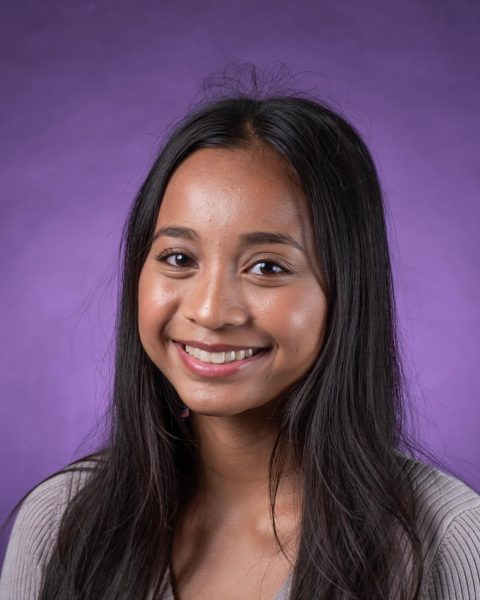
Melanie Smith, a First Year Experience librarian, styled her top with a bright yellow pin when she pointed out a Snoopy pin decorating a library peer mentor’s sweater.
“I made my own here in the Digital Media Studio and MakerSpace with the button maker,” Smith said. “Students can use it to make custom pins, which is really fun.”
The button maker is just one of the hidden gems waiting to be discovered at the J. Paul Leonard Library — a hub of knowledge and resources that extends far beyond its bookshelves.
Boost your study game: Reserve rooms, rent laptops and print with ease
In the library, there are many places to sit down and get work done. For more privacy, study rooms are available on the first floor in Research Commons and on the ground floor in Study Commons.
Students can reserve a room equipped with a whiteboard, headphones and charging ports for three hours a day per reservation, which can be made at the J. Paul Leonard Library’s website up to 72 hours in advance.
Along with rooms, laptops can also be rented at Research Commons. Students can request for a loaner laptop for the semester by submitting a request form. For short-term checkout, laptops can be rented on a first-come first-serve basis for up to four hours. Large computer areas are available for use without reservation and can be found in both Research and Study Commons.
Printing stations are accessible on the second, third and fourth floors of the library, but the Research Commons are the librarian-recommended area for printing. Black and white prints cost 7 cents and color prints cost 50 cents.
Bring creative visions to life in the Digital Media Studio and MakerSpace

Paper is not the only thing being printed at the library. The Digital Media Studio and MakerSpace located in room 260 is open to students Mondays through Thursdays from 12-5 p.m., where they can have access to 3D printing technology.
The process involves layers and layers of either biodegradable or recyclable plastic shaped into students’ digital design. Regardless if a student’s field of study provides access to digital equipment, this space allows one to produce creative work with ease for any major.
Passion projects can be produced with resources available like high-end cameras, light and mic kits, podcast studios, editing software and a variety of other gadgets, all available for student use.
Cut the costs on textbooks
Before buying expensive textbooks for class, check for eBooks on the library’s website for a free online version of the textbook. Most eBooks can be used by multiple students at the same time.
For those who prefer a physical copy in their hands, another free option to save money is utilizing course reserves — a paper book that can be borrowed for a limited amount of time.
A physical copy can be reserved for two, four, 24, or 48 hours, depending on the material and limits set by instructors. To check out, students need to present the book’s call number and their OneCard at the book checkout and pickup desk on the first floor.
When in doubt, ask!
At the bottom left corner of the library’s website, there is a yellow widget reading “Ask a Librarian,” which will bring users to a live chat operating 24 hours a day. If SFSU librarians are not available to chat, librarians from other parts of the world will be on the line and ready to answer questions.
“Please don’t be afraid to ask any question,” said Amy Healey, a Chicago librarian who answers questions through the live chat feature. “We’re here 24/7, 365.”
Boost your grades with free peer-to-peer tutoring
For those who need extra support for their classes, the Tutoring and Academic Support Center is opening its doors at room 220 for in-person drop-in tutoring or through Zoom on Mondays through Thursdays from 9 a.m.- 5 p.m. and Fridays from 10 a.m.- 2 p.m.
To make appointments in advance, students are able to schedule a time starting September 4 through Navigator, virtual reception or stopping by room 220.
“Tutoring is for everyone,” said Michelle Montoya, executive director of TASC.
“Students who want help on understanding one concept, students wanting to develop themselves as independent learners, students who like to brainstorm their ideas with others, students who prefer to meet with a group of classmates and more.”
The librarians at the J. Paul Leonard Library hope more students will feel comfortable coming in and taking advantage of the resources offered.
“It’s your library as students, and that’s what it’s here for,” Smith said.
Rodolfo Guzman, a returning student after more than 20 years, is hopeful for his second journey as a student with the library’s new features since his last semester in the spring of 1993.
“Now this time around, things are so different when there are so many resources, and you can find all this information online,” Guzman said. “If there were as many resources available back then when I was a student, I probably wouldn’t have left.”








